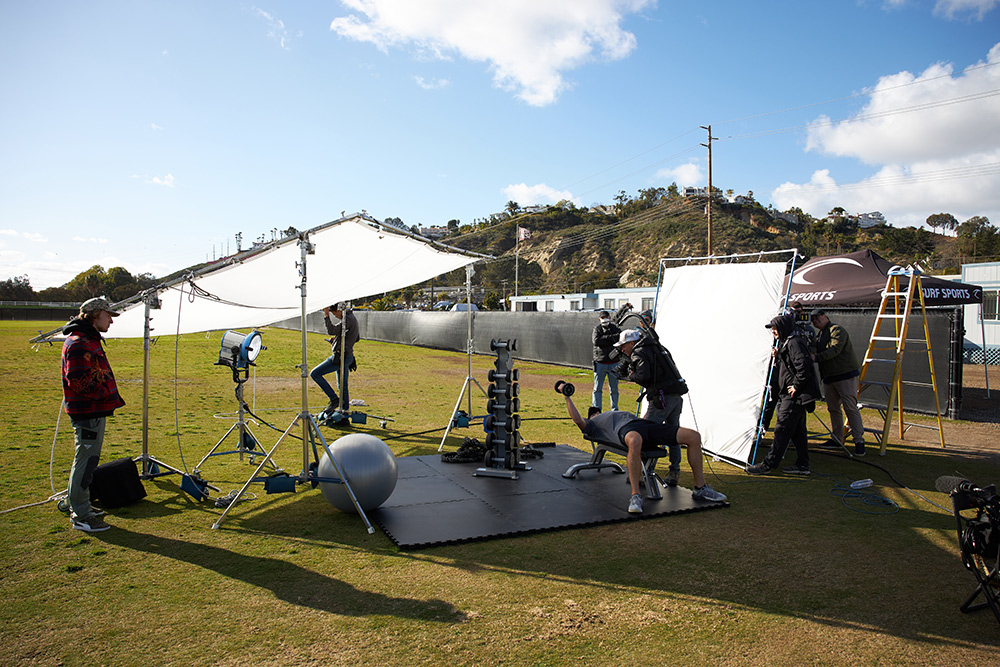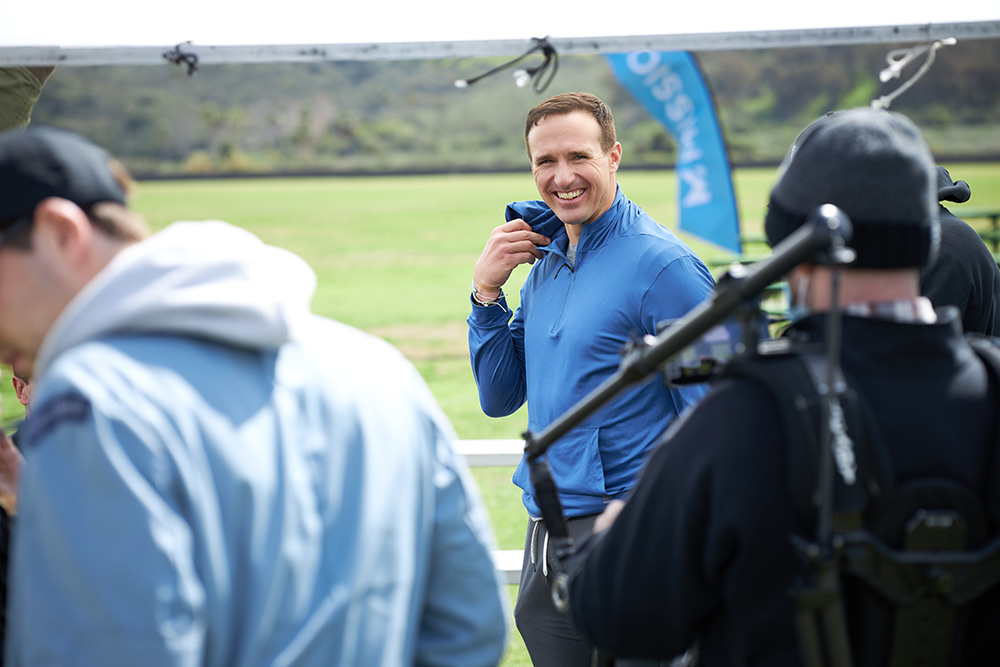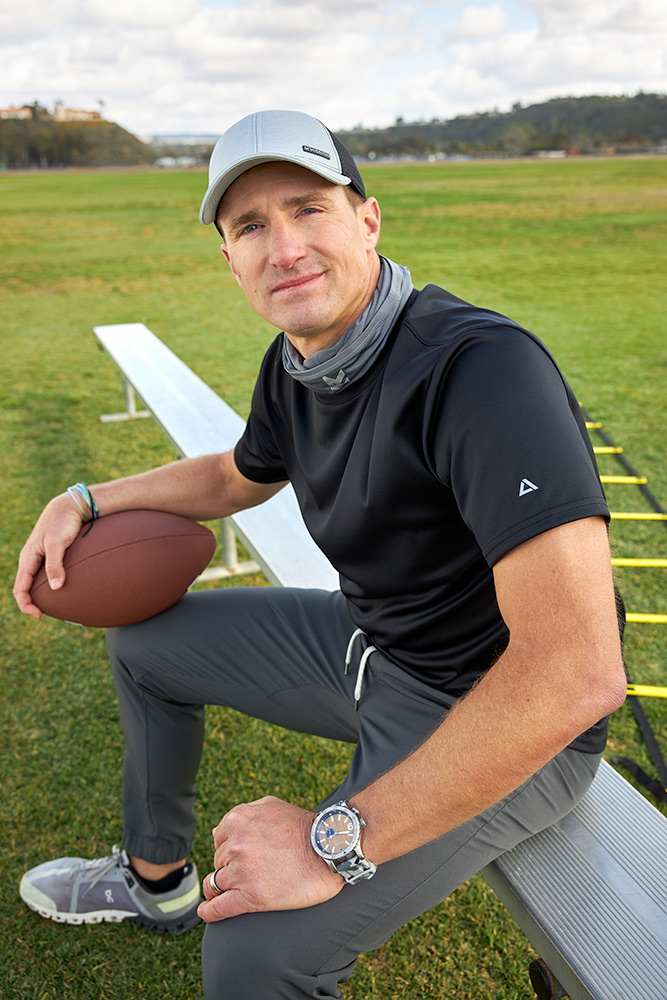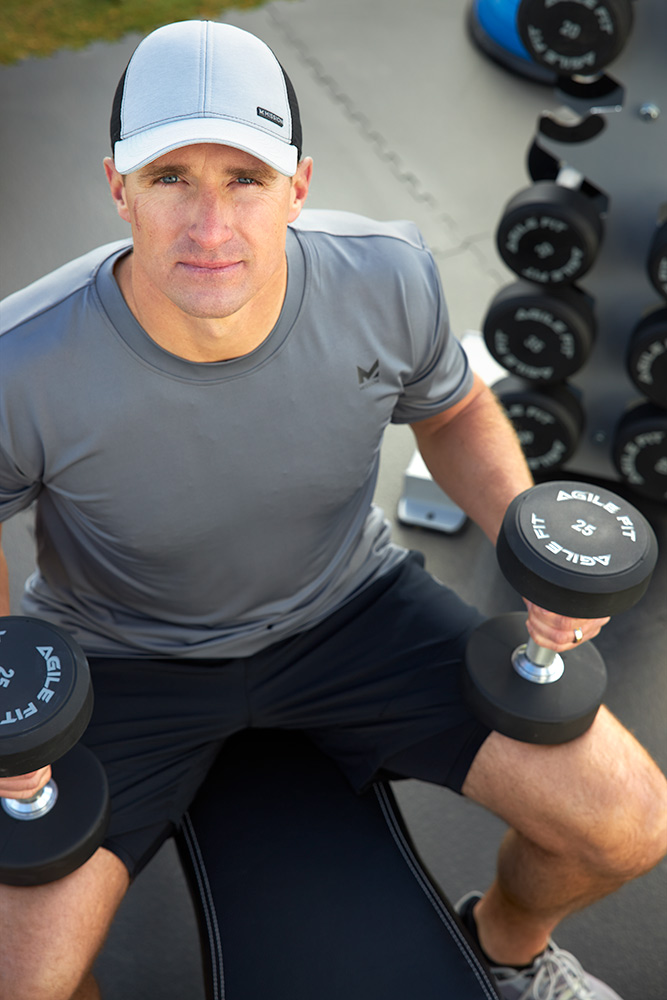Shooting Still Photo and Video Together

Flex alert here, guys. I shot Drew Brees recently, alongside a video crew in San Diego. Drew was a laid back, accommodating dude with a generally great attitude towards the whole crew. It was a high level day on my fun-o-meter.
Enough about me. Today we set out to answer the question: Can we shoot video and photo simultaneously on the same day? Should we do that?
After all, the talent is there, lighting is there, a hair and makeup artist, the clothing or product is there. You can have a still photographer weave in and out of the video sets to get captures much, much cheaper than making a separate production on another shoot day for stills. But will you get the same quality?
In order to understand this, lets first go over a few key differences between video and photo production that will help you make an informed decision.
1. Lighting- while video crews do bring lighting, often loads of it, they use continuous lighting while photographers usually use strobes (flashes). Strobes are much more powerful and put out a concentrated burst of light which lasts only a fraction of a second, rendering still images that are sharper in many cases and making it easy to freeze fast action. In addition, strobes being more powerful means its easier to balance the daylight with any artificial light. So, while it is indeed possible to piggy back a video crew’s lighting, it is by no means ideal. While shooting on the same day, its big ask to have the still photography crew set up strobes around a video crew’s lighting.
2. The Use of Photoshop- the possibility of compositing shots together easily or making edits in post (like removing a logo from clothing) can allow a photography crew an advantage in being able to travel with a smaller footprint and be less concerned with pre-production. Imagine having to remove a neck tattoo from the talent for 20 seconds of a 60 frame per second video. It is possible but not practical in post production, so for video, the tattoo may need to be covered with makeup. This adds to crew size and prep time on set, that may not be necessary for stills.

In photo, if we need a darker background and a brighter foreground, we can easily composite a darker shot and lighter shot together rather than have a crew trying to light an entire scene.
3. Perception/Scrutiny- This is a big one. While video is a fluid situation, photos are subject to more scrutiny because, in a static frame, the viewer has more time to scrutinize and fixate on details. This is why lots of care goes into retouching photos and more time is often spent on direction of light and shadow for a single still frame (especially for product shots where highlights and shadows need to be perfect).
4. Direction- While a video crew has a director who is trained to place the talent into scenarios and dynamic actions, a still photographer often does the direction himself. Still photo direction is different in several ways:
-We direct the subject into static poses that they often need to hold.
-We often direct the subject to do something similar to the action but not do the actual movement, in order to get a better result. (This is common in fitness/exercise photography where often the movement can be done with completely good form but still look very wrong in a static image).
-We often direct subjects in stills to mimic talking without actually talking.
-We often coax good expressions out of people and the coaching needs to be repeated for still capture.
For these reasons, its somewhat better to have the still photographer direct the subject specifically for stills than try to capture the motion simultaneously with a video crew’s director. Sometimes this can be done between the video crew’s shots if its scheduled but its not always possible.

So far I’ve done handful of co-ed video and still shoots with good results. I think we definitely captured a good variety of images for the client that met their expectations and produced the desired outcome given the constraints.

Would I have preferred to bring my own photography-specific lighting crew and have the talent all to myself for the entire day? Certainly. Are there ways to make a joint production generate the best number of usable images given the circumstances. Hell yeah. Lets talk about some of those.
1. Production schedule- This is probably most important. As a photographer, take the lead and make sure after each video set shot, you’re able to have some photo-dedicated time with the subject where you can be directing. Otherwise you’re leaving capture of the right facial expressions and movements to chance. You can also risk having video crew members or gear in your way since they’re often moving as they shoot.
2. Lighting- Video sets often require very fast setup and strike of different scenes. Make it clear that you need that scene’s lighting to remain up until stills are finished. Otherwise crew will often be in a hurry to get stuff to the next scene and lighting for stills can be weak. (Again, part of production schedule). If you do need to set up photo specific light and are allowed time to do so, try to mimic the video lighting setup for continuity.
3. Communicate, communicate, communicate. – Get to know the key video crew people by first name and communicate your needs. Everyone wants efficiency, but its important to maintain control of your limited time with talent to maximize good captures.
Don’t forget to leave your thoughts in the comments about shooting video and photo at the same time!
